Dunlop Geomax MX32 and Geomax MX52 Review
Has Dunlop created a better off-road tire for the consumer?
With the introduction of its all-new Geomax MX32 and MX52 motocross/off-road tires, Dunlop appears to be hell-bent as ever to be the best in the aftermarket off-road tire segment as well as the top OE tire supplier.
Frankly, we’re hard-pressed to see the benefit of the former. Since Dunlop tires already come standard on virtually every Japanese-built competition off-road and motocross bike sold to the public, building a hopped-up replacement tire in order to gain a drop in the bucket of the motorcycle tire market share might seem like a waste of resources. Then again, Mike Buckley, Dunlop’s Vice President of Motorcycle Tire Sales says that the value proposition of Dunlop’s racing activities has never been directly attributable to the number of aftermarket tires that are sold.
“We look at everything on a segment level,” Buckley said. “We have our Hypersport segment, which is sportbikes. We have our Sport-Touring segment and our Touring segment with bias and radial splits. But we lump off-road into one segment, and when we look at the motocross/supercross segment, it’s as much about branding for us, and the reach that supercross has, and the ability to get the brand out there on a different level. So it’s all of the benefits of that, the spider-web effect where Monster is running a Ryan Villopoto ad or Thor is running an ad–you get that free lift with your logo along the way. And it’s more so now than in road racing, where they’re really struggling. Also, you really can’t get that when you’re talking about the Harley segment and things like that. So a lot of why we stay so committed here is because it gives a chance to get the brand out there, whether it’s on Fox Sports 1, the Internet or print media. It is important for us to stay involved in this segment.”
So Dunlop’s new Geomax MX32 and MX52 represent more than just branding. They’re a professional-grade tire that features virtually all of the same technology found in the tires on which riders such as Ryan Villopoto, Ryan Dungey and James Stewart do battle every weekend in the Monster Energy AMA Supercross Series.
It’s funny how the line of thinking evolves. Flash back about 10 years ago, and Dunlop was happy to sell its D756RR (“Race Replica”) tires to anyone who was willing to fork out the cash. The limited-build RRs came off their own special production line in Japan, and they worked better than anything on the market. But they were also extremely expensive in spite of their superiority, causing the company to rethink its strategy on how to make that kind of tire more appealing to the general off-road consumer. The company knew that the generation of tires that it used to support the factory race teams was out of the question; the wide knob spacing on those high-wear race skins, similar to the lugs seen on a soft-terrain tire, were vastly impractical for anything outside of supercross or motocross. In order to create a more broad-based appeal, the new tires would need to be far superior in performance to Dunlop’s MX31, MX51 and MX71 line of consumer tires but more cost-effective to produce while emulating the performance of the prototype tires.
Read our review of Dunlop Q3 Tires
“We had gotten so comfortable with our pros, but what the consumer was seeing at a supercross or motocross in terms of tire patterns was not relevant to what we were selling,” Buckley said. “So, about two years ago our team got together, and I put this challenge to them: I said, basically, that we needed to return to a system where we are bringing the development of what we do in racing to a tire that is available to the consumer. It was a big challenge, but the net result is what you see here today.”
Enter the Dunlop Geomax MX32 and MX52, high-performance motocross/off-road tires that have not only altered the way the company develops, markets and sells off-road tires, but also meets or exceeds its performance and durability standards.
“I can honestly say that if I had to give my team a grade on this project, it would be an A+,” Buckley said. “We didn’t want to compromise what our pros were experiencing, particularly in supercross, where there aren’t just performance issues but some safety issues in the whoops. But we did want to bring relevant patterns that looked like tires the consumers would be buying, and we wanted to be market-driven in what we did. We wanted to make sure that it met the durability and price requirements for our consumers. Now, when consumers go to a supercross or motocross and they look at the patterns on Reed’s bike or Villopoto’s bike or Stewart’s bike, they’re going to see the same thing that they can buy.”
While prototypes of the new tires garnered 62 AMA Supercross and Motocross wins in 2013, Dunlop officials will be the first to admit that the MX32 and MX52 are not exact copies of what the top-level pros are running today. There are substantial difference in rubber compound between the production tires and those used by the factory teams–racing is a big part of the R&D process after all. However, privateer pro Weston Peick cracked the top five in the Anaheim III and San Diego rounds of the Monster Energy AMA Supercross Series with off-the-shelf MX32s and MX52s, so they must perform well. After spending the day with Dunlop at Milestone MX Park in Riverside, California, to sample both models, we can say that they are impressive indeed.
Trick Techno for the Masses
As the project moved forward, Dunlop scored two major internal victories in the development process. First, it incorporated a new, patented Progressive Cornering Block Technology (PCBT) in the Geomax MX32 and MX52 models that also use two other key technologies pioneered by Dunlop.
The PCBT incorporates a new block-within-a-block configuration on the two flanks of the tire to deliver more progressive cornering action and aid in slide control. The key to this new technology, says Dunlop, is a new knob design/technology focused on adding overall height to each knob at the center of this new multi-block configuration—specifically by incorporating a taller, smaller, inner knob. The additional biting edges and the increased surface area they provide are designed to effectively increase the tire’s footprint and its ability to spread driving loads more evenly across the knob for additional traction.
With the PCBT each knob is designed to damp out a portion of the force characteristics input into the tire while riding over rough terrain. This lends a “floating” trait to the knobs, improving stability by effectively cancelling out tire forces that might otherwise be transferred to the suspension and chassis. The taller height also allows the knob to flex and “give” more, which increases the durability of the knob.
Also, Dunlop engineers found out during testing that the old knobs had a tendency to “go negative,” actually increasing slip when transitioning into a corner. The variable height of the multi-block PCBT knobs addresses the issue by spreading the load more evenly over the surface of the knob block, especially at the edges, to produce added bite. The PCBT also enhances predictability when the tire is sliding, and it offers better feel while cornering via a more consistent transition from the center of the carcass to the sidewall and back.
Both the MX32 and MX52 also feature a redesign of a previous Dunlop technology, the Carcass Tension Control System (CTCS). The new CTCS’ flexibility comes from recesses placed strategically along the tire carcass. The recesses serve as initiated flex points to smooth the ride characteristics of the tires and allow the bike to follow a line more accurately. The CTCS carcass also takes some stress off the base of the knobs–as the carcass flexes, the knobs absorb less force. And since the knobs take less punishment, this design decreases the load on the knobs and allows them to perform more consistently, so overall tire performance can be more consistent. Dunlop says that the CTCS technology aids traction and steering, so both the MX32 front and MX52 front tires make use of it.
Dunlop has also constructed the MX32s and MX52s with a controlled-rebound rubber element in the sidewall to reduce tire bounce, such as when tracking across whoops. A layer of the controlled-rebound compound is placed in the sidewall beneath the more conventional, outer rubber compound to eliminate sidewall bounce, effectively acting as a suspension component within the tire, so that the tire can better follow the track surface.
One side benefit to all of Dunlop’s hard work is that rather than needing a soft-terrain compound, intermediate compound and hard-terrain compound to cover the gamut of track conditions and soil types found in motocross and off-road, when all was said and done, the company was able to accomplish all of its performance goals with only two models instead of the usual three. The new MX32 soft-intermediate and MX52 intermediate-hard compounds perform so well enough across the spectrum of off-road and motocross terrain to replace three models, the MX31, MX51 and MX71. That’s a big bonus for consumers, as it reduces the complexity involved in deciding which model to run, and also for Dunlop distributors, who can now cover the market with fewer part numbers.
Both the MX32 and MX52 models make use of exclusive technology as well, says Dunlop, although that technology basically involves the distribution of each model’s tread blocks. The MX52 features a unique staggered distribution of its center blocks to spread the load on the tire and help with impact damping and stability, especially in whoops and hard-pack conditions. The tread pattern has the ability to flex for compliance over various surfaces, which allows the tire to deal more effectively within a wider range of terrain.
Read our review of Pirelli Angel GT Tires
Dunlop says that the block-within-a-block pattern along with the staggered-center-block configuration and new carcass construction allow the MX52 to reach farther into the hard-terrain range and return wider use applications to the rider.
The MX32 uses a more traditional multiple block distribution in which the pitches and angles of the tire blocks are arranged so that fewer blocks are needed in the center area. Because the MX32 is intended for use in soft-to-intermediate terrain, any tie bars between its center lugs have been eliminated to reduce the resistance toward bending within blocks. This enhances contact feel and performance in sandy and muddy conditions.
Up front, the MX32’s middle blocks are staggered, and the mid-shoulder blocks are angled differently and sized differently to add side grip and promote light, responsive steering while being less prone to grabbing in ruts. As with the rear tire, the MX32 front also lacks the tie bars of the MX31/MX51/MX71. Dunlop says this enhances steering feel and promotes stability in muddy conditions.
Put to the Test
Our impressions of both Geomax models were gleaned from time spent on Milestone’s main track as well as its shorter vet track. While the soil composition of both is heavily clay-based, the main track was groomed to be looser, offering traction conditions similar to a sand or loamy track while the popular vet track, with its fewer jumps and whoops, developed more of a classic So Cal blue groove. As usual, our ace in the hole was former Baja 500 runner-up Ryan Abbatoye, who has extensive experience with the Dunlop MX31, MX51, and MX71. Being completely candid, Abbatoye said that he wasn’t wowed by any of them.
“The 71s last a long time but they can be downright scary unless the conditions are perfect,” Abbatoye said. “Honestly, I hate them. I feel like I have to ride very cautiously with them because of how sketchy they are in finding traction. The MX31s are okay, but they wear out so quickly, and the MX51s are decent as well, but they have their pros and cons. There are places where they work well and places where they don’t. They are a real compromise.”
Abbatoye was riding a 2014 Honda CRF250R test unit for the Dunlop intro, and it only took a few laps aboard the MX52s for him to recognize the improvements that Dunlop had made.
The MX52s work really well all-around,” Abbatoye said. “There is only one spot on the track where I feel like I was losing traction. It was on the main track. It was a hard section with a little bit of loam on top. It was about midway through a corner where you’d get on the gas and expect it to stick, and it would slide out. But when I went and rode it on the completely compacted parts of the track, it worked well. The front tire seemed to work well everywhere, with consistent feedback and predictable turn-in. I felt like I could be happy with the MX52s until I finished that moto, got back to the truck and switched to the MX32s.
You might say it was love at first lap. Abbatoye isn’t one to rave, but he came about as close as we’ve ever seen him after sampling the MX32s.
Read our review of Metzeler Roadtec Interact Z8 Tires
“The MX32s worked best on both tracks we tested,” Abbatoye said. “There wasn’t really too big of difference between the two in the whoops, but there was a huge difference for me when braking hard. The 32s have an excellent feel. They hook up in every situation on the track, including where the MX51s don’t, and they are amazingly consistent, which makes you feel way more confident like you know what they’re going to do, where they’re going to do it and when they’re going to do it.”
One area where Abbatoye definitely favored the MX32 was in the transition between fully upright and leaned over in a corner. In that instance, the 32s feel like a sticky DOT supersport tire, exhibiting excellent grip and zero sketch as the tire moves from the big knobs to the side knobs. Dunlop’s PCBT and new knob spacing pay huge dividends here.
“With the 32 I pretty much tried to go places where I knew I would normally lose traction, such as at the end of the day when they watered the vet track, and it gets like an ice skating rink,” Abbatoye said. “For the first couple laps, you figure because it is hard-packed and wet, you want to take it easy. But the MX32s were hooking up so well even though it was wet and slippery that I could go wherever I wanted, and I found myself getting on the gas sooner until I was going as hard as I normally would, and the track was still wet. The MX32s are the best performing tires, for sure,” Abbatoye said. “For the conditions that we rode, on that day, they were some of the best tires I’ve ever ridden.”
But maybe the best attribute of the new Geomax MX32s and MX52s is their price point. For their quantum leap in performance and technology, the MX32s and MX52s cost only about $10 more than the tires they replace. Available in most popular off-road rim sizes, the MX52 front tire is available in an 80/100-21 size for 120.89 and in a 90/90-21 for $123.92 for the 21-inch rim size. For 19-inch rear wheels, MSRP ranges from $134.04-$149.25. The MX32 is currently available only in the 80/100-21 size for $127.51, while the 19-inch rear sizes carry the same MSRP as the MX52 rears. Those affordable price points have the potential to put a greatly improved tire into the hands of most amateur riders without breaking the bank, something that Buckley says Dunlop worked just as hard on as the actual design and construction of its new Geomax offerings.
“The amateur guys are critically important to us,” Buckley said. “They may start out on 60s or 85s or what have you, but they get that motorcyclist gene. They become motorcyclists. This segment puts the blood into people, so the more we can do in the segment, particularly in the amateur side, that’s why we have the investment. We feel as if we’re making motorcyclists for the future.”
All that’s left is to see how the MX32s and MX52s wear over the long haul. We have procured a set of both models and plan to file another report once Abbatoye finishes flogging them on the track and in the desert on his Kawasaki KX450 racebike. Stay tuned.
More by Scott Rousseau



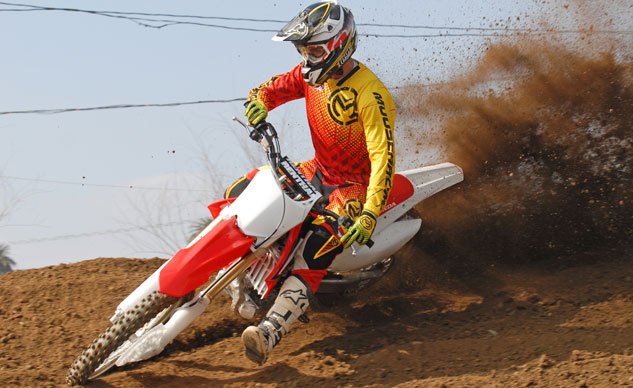
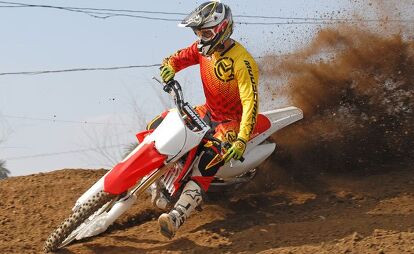
























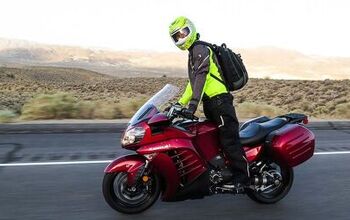
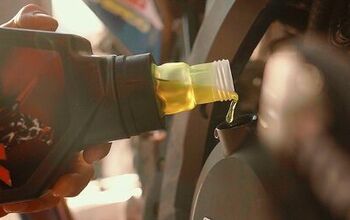
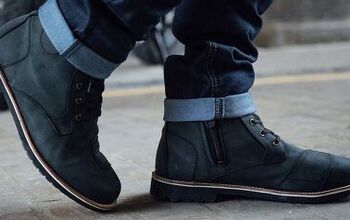















Comments
Join the conversation
Attaboye, Scott!
Wow. $120 for a front knobby? That is insane.
I ride off road and run the MX71 front and a Maxxis Desert IT rear on my Husaberg FE450. The MX71 works pretty well in Colorado's decomposed granite trails. It has very durable construction - not only does not wear out right away, it is resistant to flats. Off road is a world filled with rocks and sharp things. MX oriented tires do not last well and flat easily.
The MX71 almost seems like an accidental off road tire. It would be cool if Dunlop marketed a line of durable tires that give decent traction for off road. Kind of like sport touring tires for street bikes. Off roaders need tires that last and resist flats. Different mission statement from an MX bike that gets ridden only a few miles. Some of my rides are 100 miles long. The MX71 lasts most of a season and works pretty well on the trails. Great tire. Keep making it :)